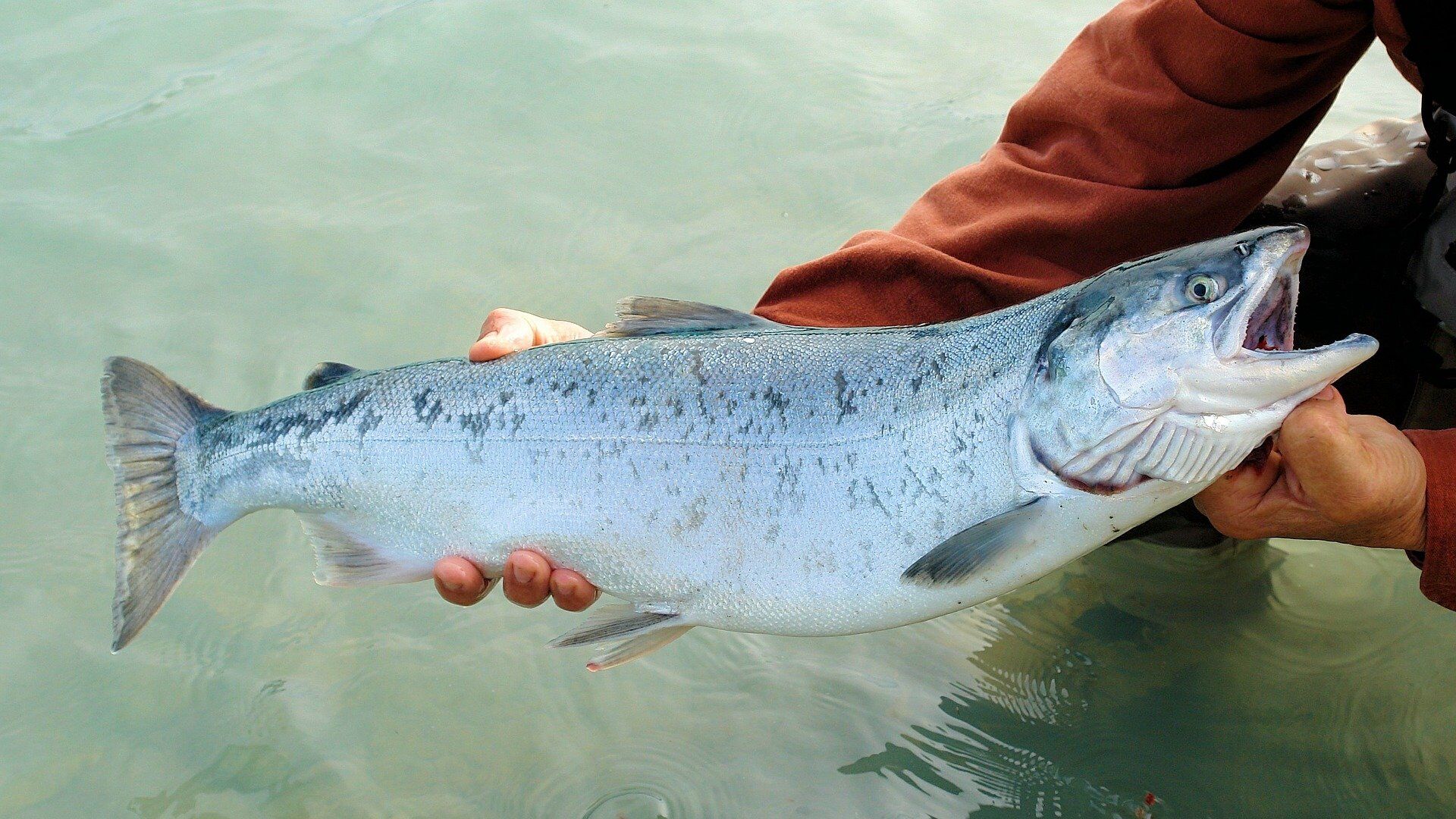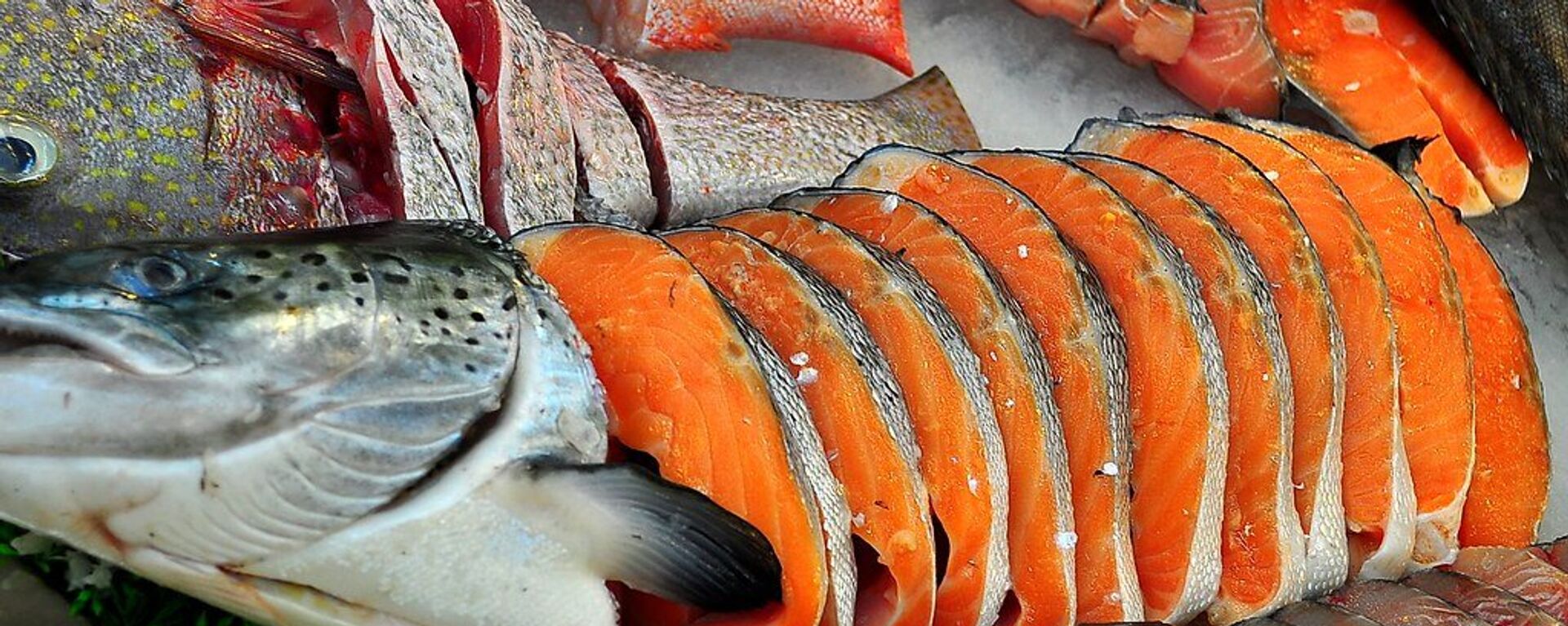https://sputnikglobe.com/20211109/healthy-nutrient-levels-in-soy-fed-farmed-salmon-drop-drastically--norwegian-study-1090583894.html
Healthy Nutrient Levels in Soy-Fed Farmed Salmon Drop Drastically – Norwegian Study
Healthy Nutrient Levels in Soy-Fed Farmed Salmon Drop Drastically – Norwegian Study
Sputnik International
The drop in key nutrients such as omega 3 fatty acids and iodine has been attributed to a change in feed, as Norwegian fish farms have switched from mainly... 09.11.2021, Sputnik International
2021-11-09T06:54+0000
2021-11-09T06:54+0000
2021-11-09T06:54+0000
newsfeed
europe
environment
norway
scandinavia
salmon
fish
https://cdn1.img.sputnikglobe.com/img/105222/66/1052226674_0:0:1920:1080_1920x0_80_0_0_125552ed9d0a3c005506bc2c1fe91651.jpg
Over the last 15 years, the level of marine omega 3 fatty acids in farmed salmon, for which this fish is highly coveted, has been halved, the Norwegian Institute of Marine Research said, after carrying out a study on the levels of key nutrients in farmed salmon.“We saw the largest reduction in omega-3 from 2005 to 2011, while in recent years the levels have been relatively stable,” doctoral fellow Amalie Moxness Reksten stated in a press release.Over the same period, farmed salmon in Norway have gone from eating feed with mainly marine ingredients to more vegetable ingredients such as soy, rapeseed, wheat, corn, and sunflower.However, despite the marked drop, there’s enough in one serving to cover people’s daily needs, the study maintained.“Our results show that even though the content of marine omega-3 fatty acids more than halved, salmon still contains a lot of the important nutrient,” Reksten assured.The study also revealed that the levels of iodine have also dropped.“Fatty fish contains little iodine, and this was confirmed by our study. In fact, the content of iodine has decreased over time, and the farmed salmon has thus gone from containing little to containing even less iodine,” Reksten said.This is not the first report that raises doubt over the health benefits of Norwegian-produced farmed fish. In 2019, the Swedish magazine Filter claimed that Norwegian farmed salmon are “fed food that contains heavy metals and toxins”. “Tens of thousands of tonnes of pesticides are used to combat diseases and pests. In addition, the fish farms themselves kill shellfish and cause eutrophication,” the magazine claimed.The Norwegian aquaculture industry has seen a rapid growth since its beginnings in the 1970s. In recent years, Norway has accounted for about half of the world's total production of Atlantic salmon. Today, fish farming is prolific along most of Norway's coastline, producing more than 1.2 million tonnes per year, 95 percent of which is exported. Farmed fish has often been called a second staple of the Norwegian economy, trailing only oil and gas.
https://sputnikglobe.com/20190508/norwegian-salmon-threat-world-1074809996.html
norway
scandinavia
Sputnik International
feedback@sputniknews.com
+74956456601
MIA „Rossiya Segodnya“
2021
News
en_EN
Sputnik International
feedback@sputniknews.com
+74956456601
MIA „Rossiya Segodnya“
Sputnik International
feedback@sputniknews.com
+74956456601
MIA „Rossiya Segodnya“
newsfeed, europe, environment, norway, scandinavia, salmon, fish
newsfeed, europe, environment, norway, scandinavia, salmon, fish
Healthy Nutrient Levels in Soy-Fed Farmed Salmon Drop Drastically – Norwegian Study
The drop in key nutrients such as omega 3 fatty acids and iodine has been attributed to a change in feed, as Norwegian fish farms have switched from mainly marine to more vegetable-based ingredients, including soy.
Over the last 15 years, the level of marine omega 3 fatty acids in farmed salmon, for which this fish is highly coveted, has been halved, the Norwegian Institute of Marine Research said, after carrying out a study on the levels of key nutrients in farmed salmon.
“We saw the largest reduction in omega-3 from 2005 to 2011, while in recent years the levels have been relatively stable,” doctoral fellow Amalie Moxness Reksten
stated in a press release.
Over the same period, farmed salmon in Norway have gone from eating feed with mainly marine ingredients to more vegetable ingredients such as soy, rapeseed, wheat, corn, and sunflower.
“Changes in the feed affect what the fish fillet that we eat contains,” Reksten noted.
However, despite the marked drop, there’s enough in one serving to cover people’s daily needs, the study maintained.
“Our results show that even though the content of marine omega-3 fatty acids more than halved, salmon still contains a lot of the important nutrient,” Reksten assured.
The study also revealed that the levels of iodine have also dropped.
“Fatty fish contains little iodine, and this was confirmed by our study. In fact, the content of iodine has decreased over time, and the farmed salmon has thus gone from containing little to containing even less iodine,” Reksten said.
This is not the first report that raises doubt over the health benefits of Norwegian-produced farmed fish. In 2019, the Swedish magazine Filter claimed that Norwegian farmed salmon are “fed food that contains heavy metals and toxins”. “Tens of thousands of tonnes of pesticides are used to combat diseases and pests. In addition, the fish farms themselves kill shellfish and cause eutrophication,” the magazine claimed.
The Norwegian aquaculture industry has seen a rapid growth since its beginnings in the 1970s. In recent years, Norway has accounted for about half of the world's total production of Atlantic salmon. Today, fish farming is prolific along most of Norway's coastline, producing more than 1.2 million tonnes per year, 95 percent of which is exported. Farmed fish has often been called a second staple of the Norwegian economy, trailing only oil and gas.


